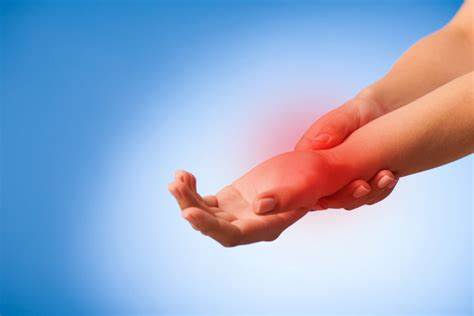What to know about complex regional pain syndrome.
- Más allá del dolor

- Aug 20, 2021
- 3 min read
Complex regional pain syndrome (CRPS) is a painful condition of a person’s arm, hand, leg, or foot, which occurs after an injury, such as a fracture. Rarely, CRPS can affect other body parts, such as the face.

Complex regional pain syndrome (CRPS) is a form of chronic pain that usually affects an arm or a leg. / Photo: Net
According to Janvier Rusizana, a general practitioner at Clinique La Trade –Kigali, at the clinic, it’s common to attend to people with CRPS.
The symptoms, he says, range from mild to severe, and may last months or even years.
The cause of CRPS is unknown, however, Rusizana says when it comes to treatment, they aim at simply relieving symptoms and restore limb function (movement and activity).
“Most people recover fully, but the condition can recur and for a small group of people with CRPS, symptoms may be severe and persist for a long time,” he says.
Meanwhile, studies show that females are three times more likely to be affected by this condition than males. In adults, the most commonly affected limb is the arm. In children, it is the leg. CRPS affects people in different ways and one person’s response to treatment will be different from another’s.
Symptoms such as burning pain in the arm, hand, leg, or foot, pain that changes in intensity, but often feels much worse than may be expected, loss of fine motor control, and stiffness are just some of the problems that come with CRPS.
How to handle the condition
CRPS is a pain disorder that can affect different body systems. Most health professionals believe that a few different factors may trigger the symptoms.
The way each of these factors contributes to the onset of CRPS may be different for each person.
Also, there is no simple cure for CRPS, and that treatment always involves a number of approaches and aims to restore movement and function of the affected limb.
These options, Dr Rusizana says, include pain-relieving medication, noting that medications that are usually prescribed for other conditions, such as epilepsy or depression, can sometimes help to manage CRPS, clarifying that this however does not mean that the person has epilepsy or depression.
Celestine Karangwa, a physiotherapist at Technology Clinic in Remera-Kigali, says physical therapy such as physiotherapy and occupational therapy is another way to manage CRPS.
He says typically, treatment starts with strategies to reduce pain and swelling.
This, he says, is then followed by gentle movement, then muscle-strengthening exercises to improve the functioning of the limb and, finally, exercises to improve the functioning of the person’s whole body.
Besides, he notes that counselling and psychological support, such as helping the person cope with stress, depression and chronic pain, can sometimes be applied.
Another way of treating CRPS is intervention therapy, such as nerve blocks.
The most commonly used is a sympathetic ganglion block, which involves the use of a local anaesthetic to stop some of the nerves in the affected limb from working.
Rusizana says that implant therapy also comes in as a form of treatment where there is an operation to place a device, such as an electrode, or a medication-delivery system is placed into the person’s body.
The device, he says, helps to manage symptoms, including pain, however, he notes that implant therapy is considered a last resort when all other methods of pain management have failed.
Most people recover from CRPS, but for some, there is a range of ongoing symptoms that vary from minor to severe. For a small group of people with CRPS, significant pain and disability persist for years.
About one adult in 10 will develop a new bout of CRPS after they have been free of symptoms for some time. Children are more likely to have a relapse than adults. Relapses can happen for no known reason or can occur after surgery for a separate problem.
By
Published : March 15, 2021 | Updated : March 15, 2021
www.newtimes.co.rw







Comments